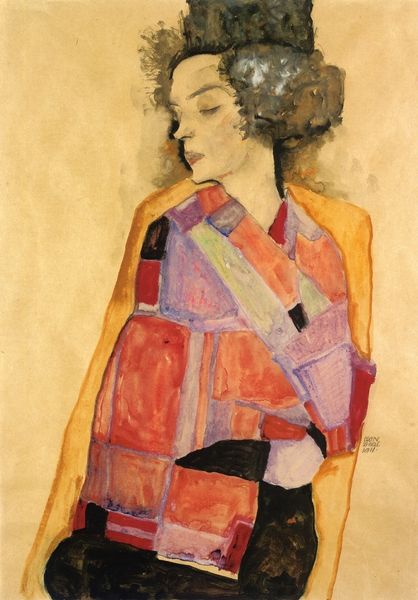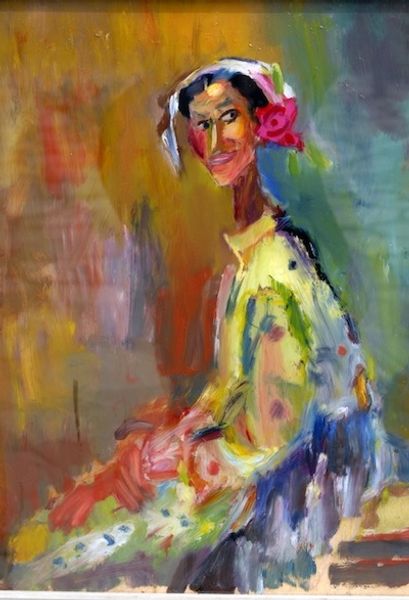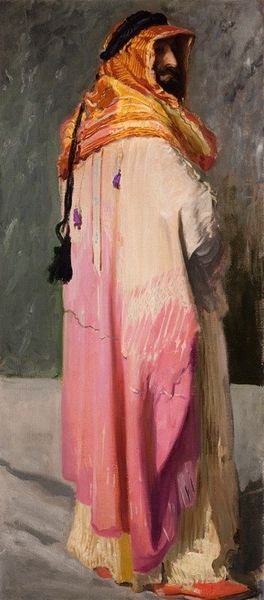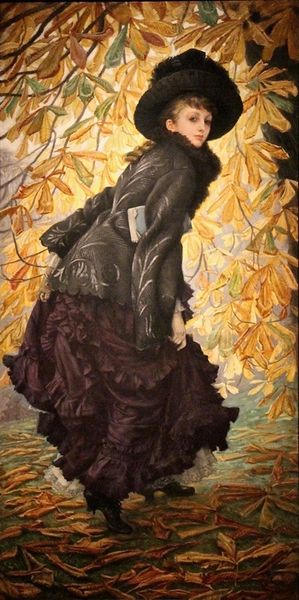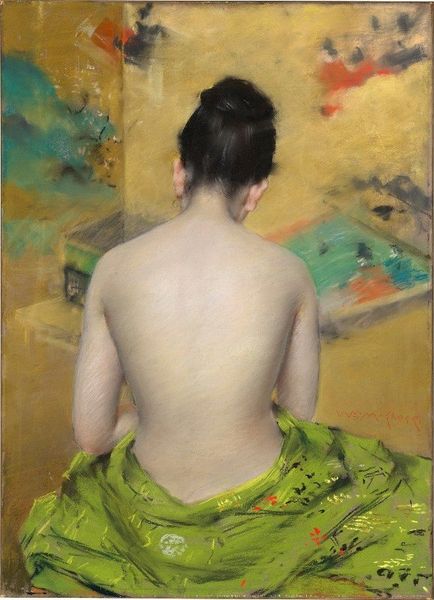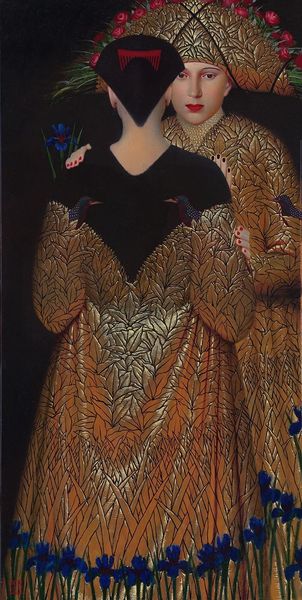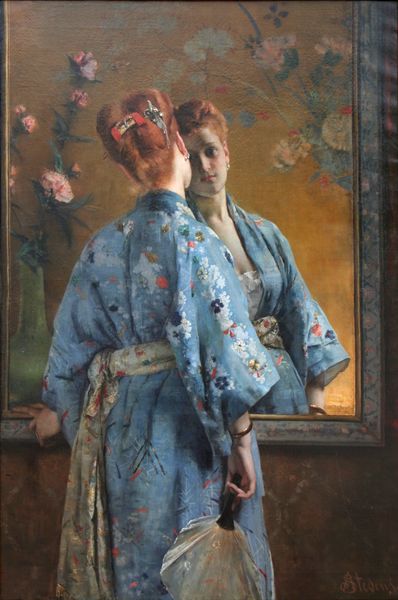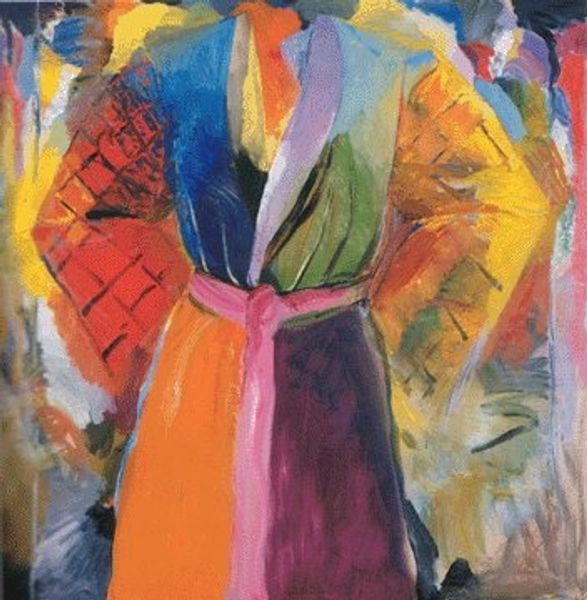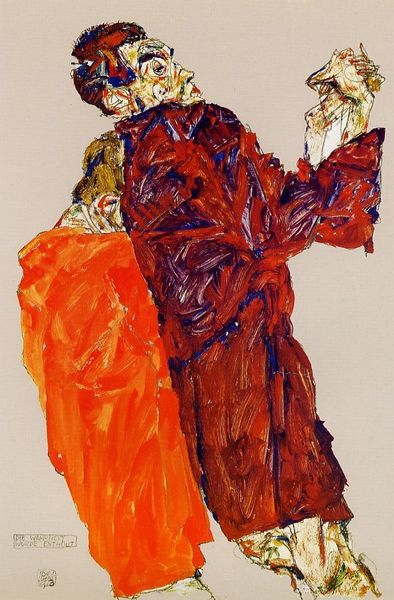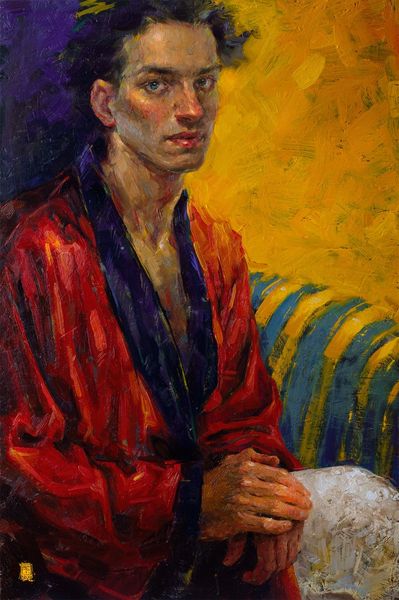
Copyright: Public Domain: Artvee
Leon Wyczółkowski made this intriguing painting called "Japanese Woman" at the end of the 19th century. The painting invites us to consider the cross-cultural fascination that was prevalent during this era. Here, Wyczółkowski, a Polish artist, engages with the Japonisme movement. This was a period when Western artists were heavily influenced by Japanese art and aesthetics, as Japan opened its doors to the West. The figure, draped in a vibrant kimono, stands as a symbol of this cultural exchange. But what does it mean for a Polish artist to represent a Japanese woman? The gaze of the woman, directed towards a backdrop that seems to echo Japanese prints, suggests a longing, a contemplation. It evokes questions about identity, representation, and the exoticization of the East. The emotional complexity of this piece lies in its quiet questioning of cultural boundaries and the very act of artistic interpretation. How do we, as viewers, navigate these representations, and what do they reveal about our own perceptions and biases?
Comments
No comments
Be the first to comment and join the conversation on the ultimate creative platform.
